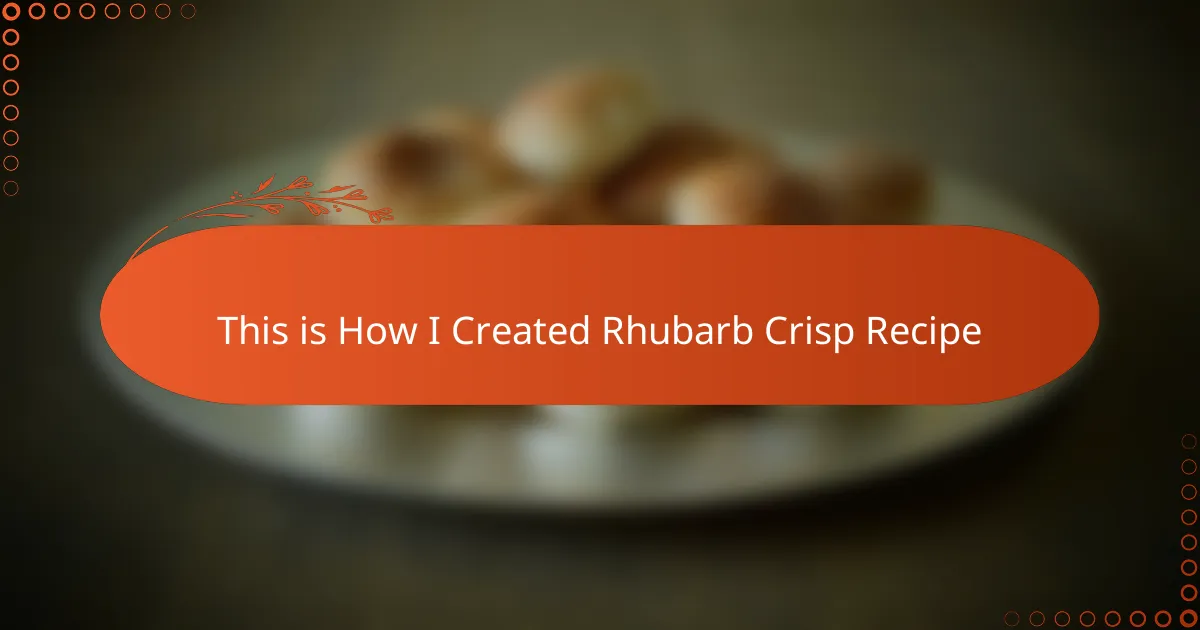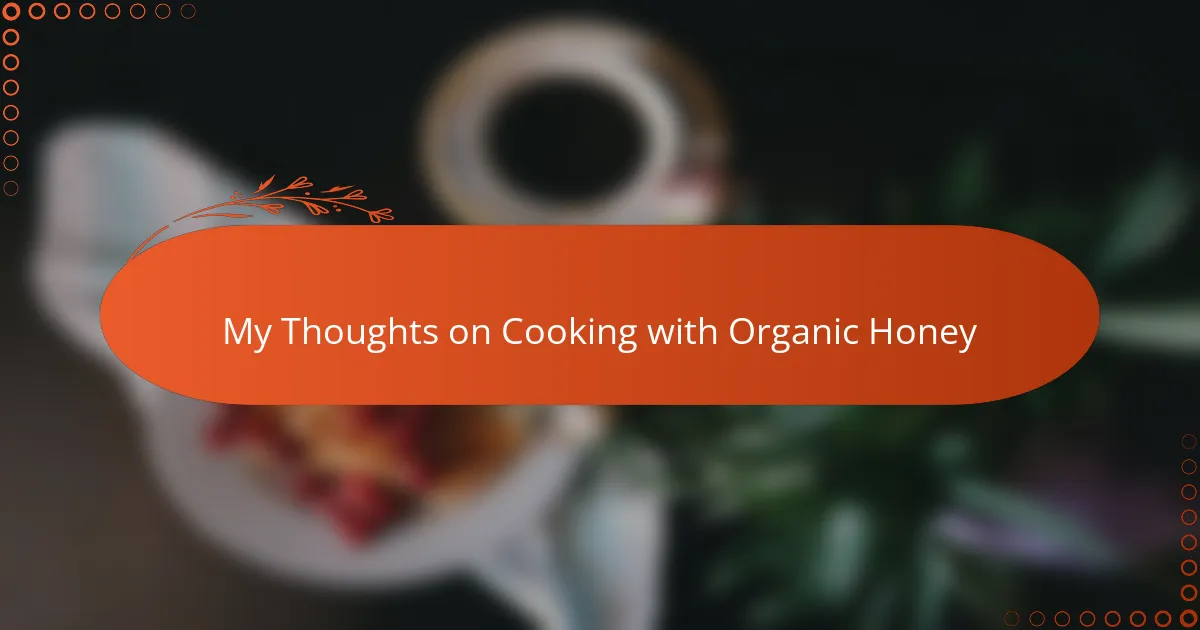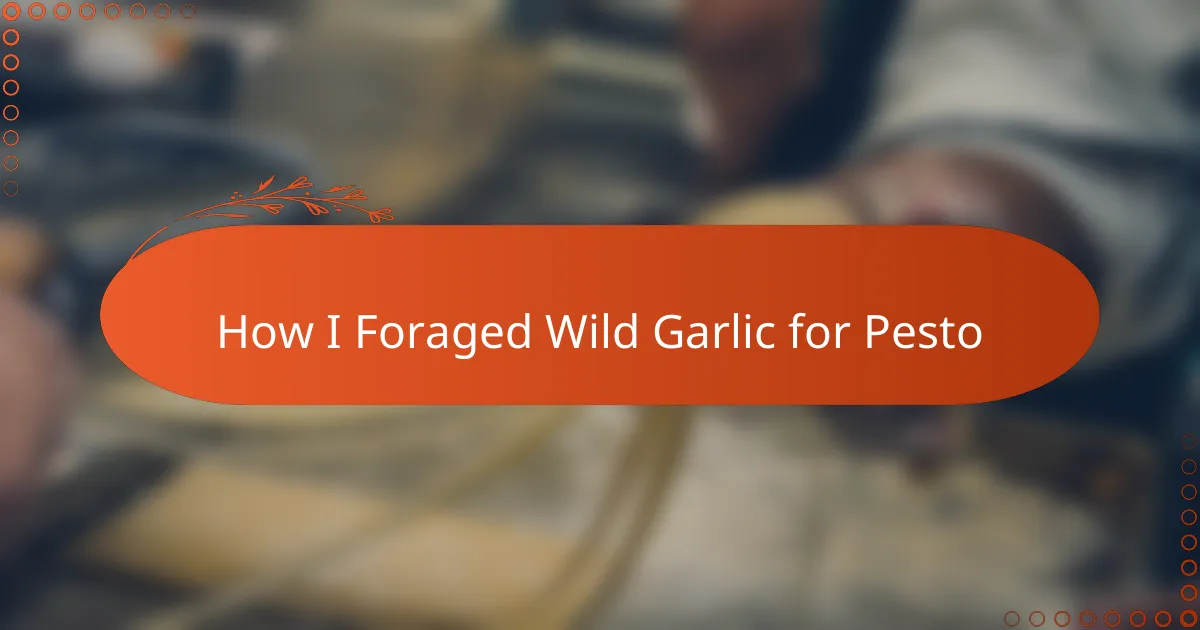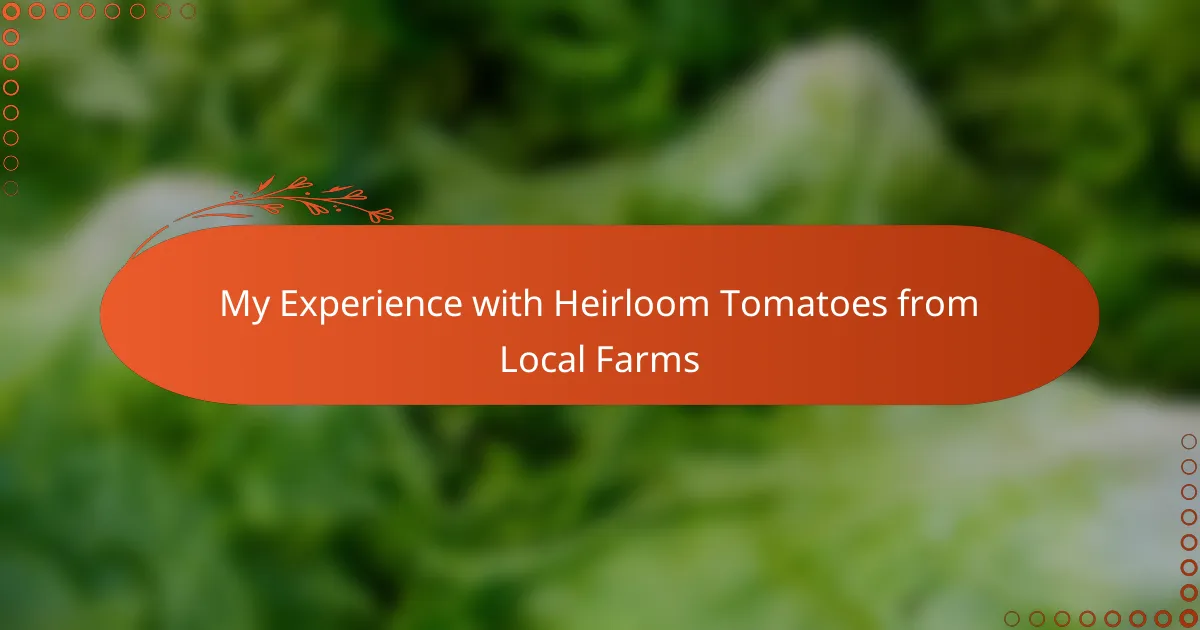Key takeaways
- Homesteading cooking emphasizes using fresh, seasonal ingredients and fosters a mindful approach to meal preparation.
- Rhubarb is a versatile vegetable that adds tartness to both sweet and savory dishes, particularly in rhubarb crisp.
- Key ingredients for a successful rhubarb crisp include fresh rhubarb, brown sugar, and a crunchy topping of oats and flour.
- Experimenting with variations, such as adding strawberries or nuts, can enhance the flavor and texture of traditional recipes.
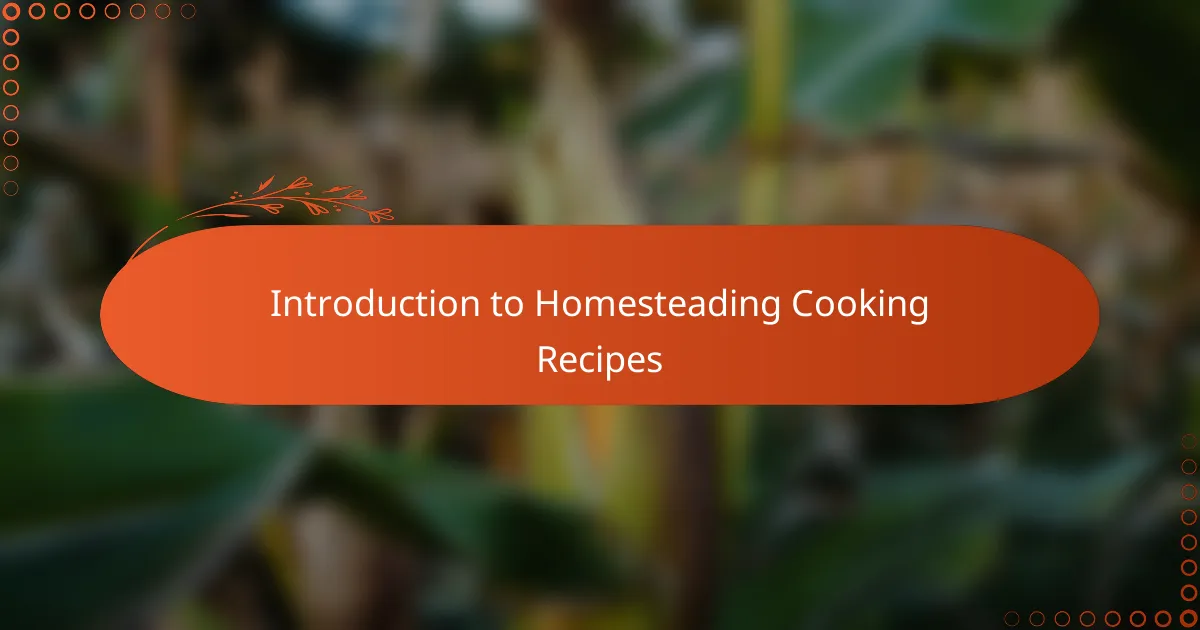
Introduction to Homesteading Cooking Recipes
Homesteading cooking recipes are more than just instructions—they’re stories passed down, flavors nurtured, and traditions kept alive in every bite. Have you ever felt the joy of turning simple, fresh ingredients from your garden into a comforting meal? That connection to the land and the season is what makes these recipes truly special.
When I first started exploring homesteading, I quickly realized how empowering it is to create dishes from scratch, using what nature provides. It’s a blend of patience, creativity, and respect for the ingredients. Doesn’t that make you appreciate each meal a little more?
These recipes also embody a slower, more mindful way of cooking, inviting us to savor the process instead of rushing toward the next convenience. In a world that’s always on the go, isn’t it refreshing to take time and enjoy food as a labor of love?
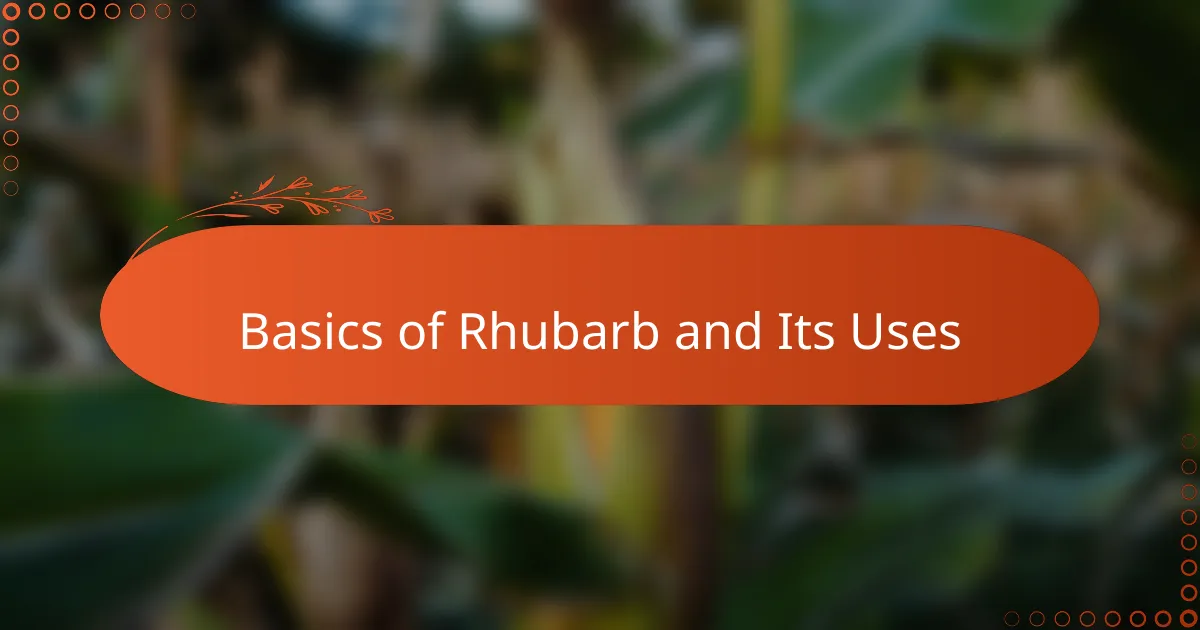
Basics of Rhubarb and Its Uses
Rhubarb is one of those unique plants that always surprised me with its tart, vibrant flavor. Its thick, celery-like stalks are the parts we usually use in cooking, while the leaves are actually toxic—a fact I learned the hard way during my early days of gardening. Have you ever been intrigued by a vegetable that feels like fruit? That’s rhubarb for you.
What really draws me to rhubarb is its versatility. Beyond pies and crisps, it can brighten up sauces, jams, and even savory dishes, adding a sharp tang that balances richness beautifully. When I first mixed rhubarb into a stew, I didn’t expect the punch it would bring, but it quickly became a staple in my kitchen experiments.
I think the charm of rhubarb lies in how it embodies the spirit of homesteading—taking simple, homegrown ingredients and transforming them into something memorable. Have you tried wrangling with its tartness to create your own sweet or savory masterpiece? Trust me, it’s worth the effort.
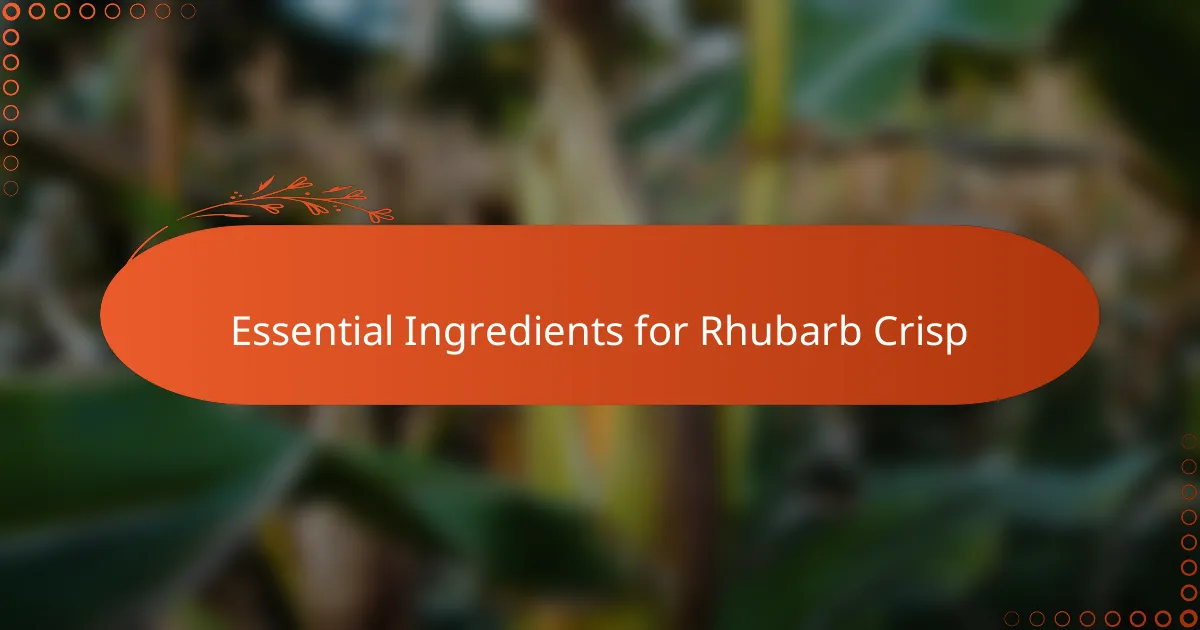
Essential Ingredients for Rhubarb Crisp
When I first made rhubarb crisp, I realized how crucial fresh rhubarb is. Its natural tartness is the backbone of the dish, offering a bright contrast to the sweetness. Have you ever noticed how that tangy punch makes every bite come alive? For me, using rhubarb straight from the garden brings an unmatched freshness that canned or frozen just can’t replicate.
The balance in a rhubarb crisp depends heavily on sugar and a few simple pantry staples. Brown sugar, in particular, adds a warm, caramel-like depth that complements rhubarb’s sharpness. I remember adjusting the sweetness the first time I baked mine—too little, and the tartness overwhelmed; too much, and it lost its character. Finding that sweet spot changed how I approach desserts altogether.
Of course, no rhubarb crisp would be complete without the crisp topping itself—a mix of flour, oats, butter, and a pinch of cinnamon. The crunch provides a delightful contrast to the soft, bubbling rhubarb beneath. I still smile thinking about the first time I bit into that perfect blend of textures; it felt like a little celebration in my mouth. Don’t you love when a simple combination of ingredients creates something so comforting and memorable?
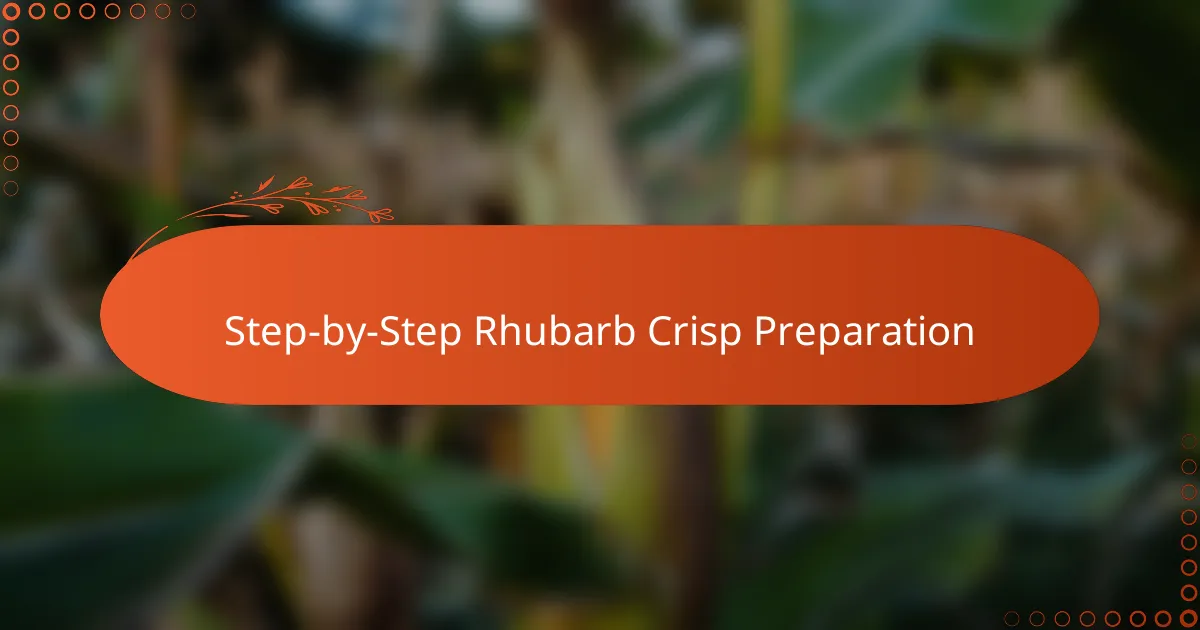
Step-by-Step Rhubarb Crisp Preparation
First, I chop the fresh rhubarb into even pieces, making sure each bite will be perfectly tender yet retain a bit of bite. Have you ever noticed how prepping the fruit properly sets the foundation for the whole dish? It’s such a small step but makes a huge difference when you taste the final crisp.
Next comes the sweetening and flavoring—sprinkling brown sugar over the rhubarb and adding a pinch of cinnamon to warm it up. I learned early on that letting this mixture sit for a bit draws out the juices and balances the tartness beautifully. It’s almost like giving the rhubarb a little moment to get cozy before baking.
Then, the topping goes on: a crumbly mix of oats, flour, butter, and just enough sugar to crisp up golden in the oven. When I press the topping gently over the fruit, I can already imagine that satisfying crunch with every spoonful. Doesn’t that anticipation make the waiting worthwhile?
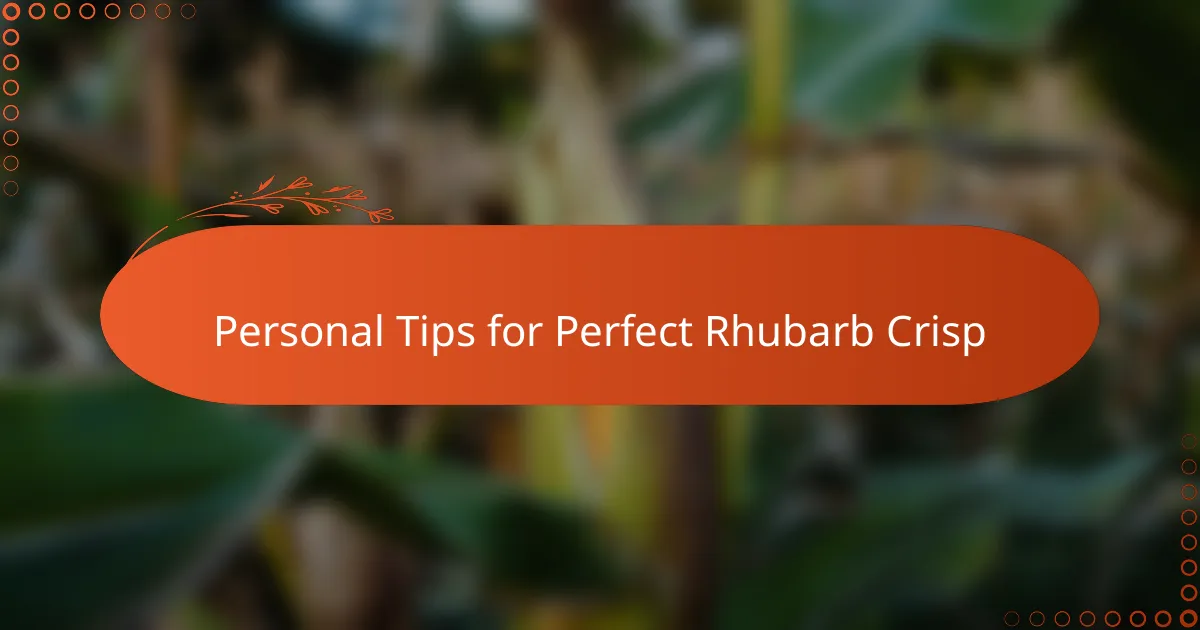
Personal Tips for Perfect Rhubarb Crisp
One tip I swear by is adjusting the sugar based on your rhubarb’s tartness; some batches are sharper, so I start with less sugar and taste as I go. Have you ever caught yourself sneaking spoonfuls of the filling before it even hits the oven? That’s usually my way of knowing if it needs a little more sweetness.
I also like to bake my crisp just until the topping is golden and the rhubarb juices are bubbling at the edges. Overbaking dries it out, while underbaking leaves the topping soggy—finding that sweet spot feels like hitting a perfect note. It’s a guessing game I enjoy, much like a warm conversation with an old friend.
Lastly, letting the crisp cool for at least 10 minutes helps the juices thicken, so each bite stays together without turning into a soggy mess. Ever waited eagerly for dessert, but then realized patience really does pay off? That moment of waiting makes serving the crisp feel even more rewarding.
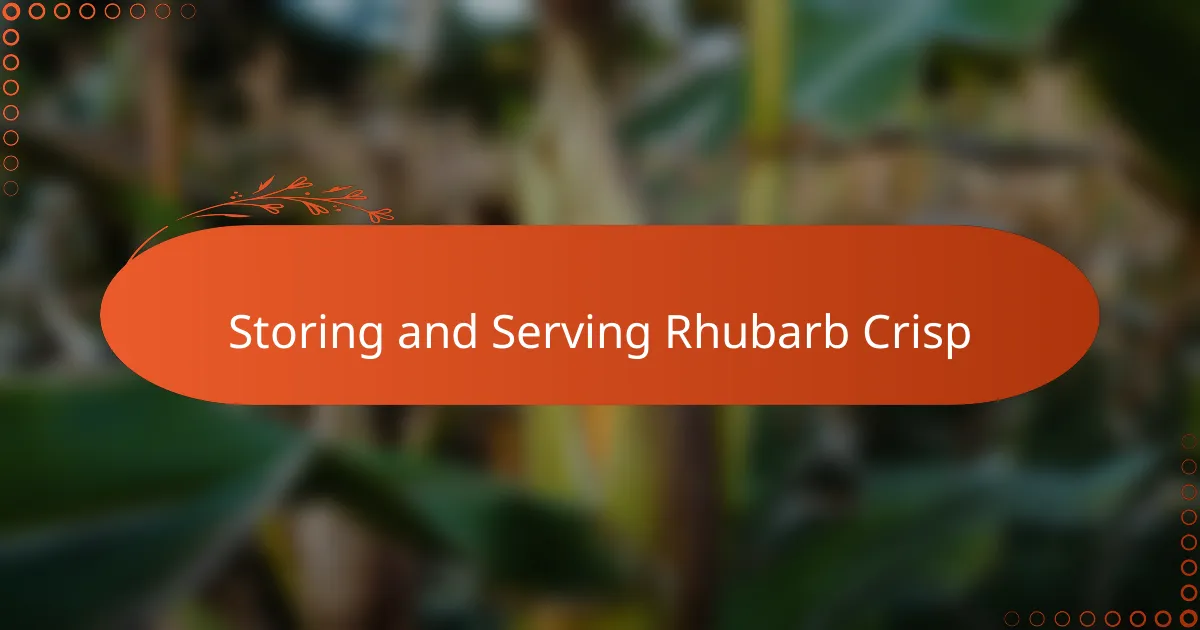
Storing and Serving Rhubarb Crisp
When it comes to storing rhubarb crisp, I’ve found that covering it tightly with foil or plastic wrap and popping it into the fridge keeps it fresh for up to four days. Have you ever tried reheating leftover crisp? I like to warm it gently in the oven—it revives that crispy topping beautifully without turning it soggy, which microwave reheating tends to do.
Serving rhubarb crisp warms my heart, especially when paired with a scoop of vanilla ice cream or a dollop of whipped cream. That contrast between the warm, tart fruit and the cold, creamy topping feels like the perfect comfort on a cool evening. Don’t you think a simple garnish can turn a humble dessert into a special treat?
If you ever find yourself with a little extra crisp, freezing portions in airtight containers works like a charm. From my experience, defrosting it slowly in the fridge overnight preserves the textures well, making it an easy, ready-to-go dessert for busy days on the homestead. Have you discovered any go-to storage hacks that save time without sacrificing flavor?
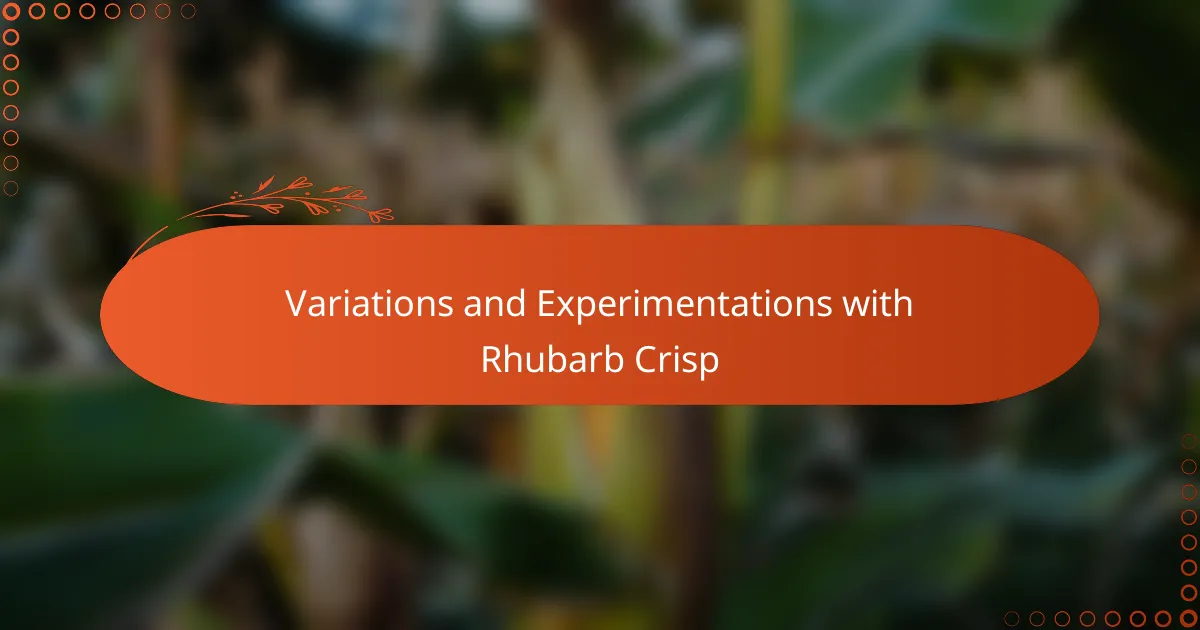
Variations and Experimentations with Rhubarb Crisp
Playing around with rhubarb crisp has been one of my favorite kitchen adventures. For instance, I once swapped half the rhubarb with fresh strawberries—imagine that tart-sweet dance! It added a lovely juiciness that made each bite feel like a summer memory, and I wondered, why hadn’t I tried this sooner?
Then, there’s the topping. I’ve experimented by adding chopped nuts — walnuts or pecans — to bring a deeper crunch and a hint of earthiness. At first, I was nervous it might overpower the rhubarb, but surprisingly, it balanced the flavors beautifully. Have you ever been pleasantly surprised by a tweak you almost didn’t dare to make?
Sometimes, I also play with spices beyond cinnamon—adding a pinch of ginger or cardamom offers an unexpected warmth that lifts the whole dessert. It’s these little experiments that keep the recipe fresh for me, turning a classic crisp into a new experience every time. What variations would you be curious to try in your next batch?
